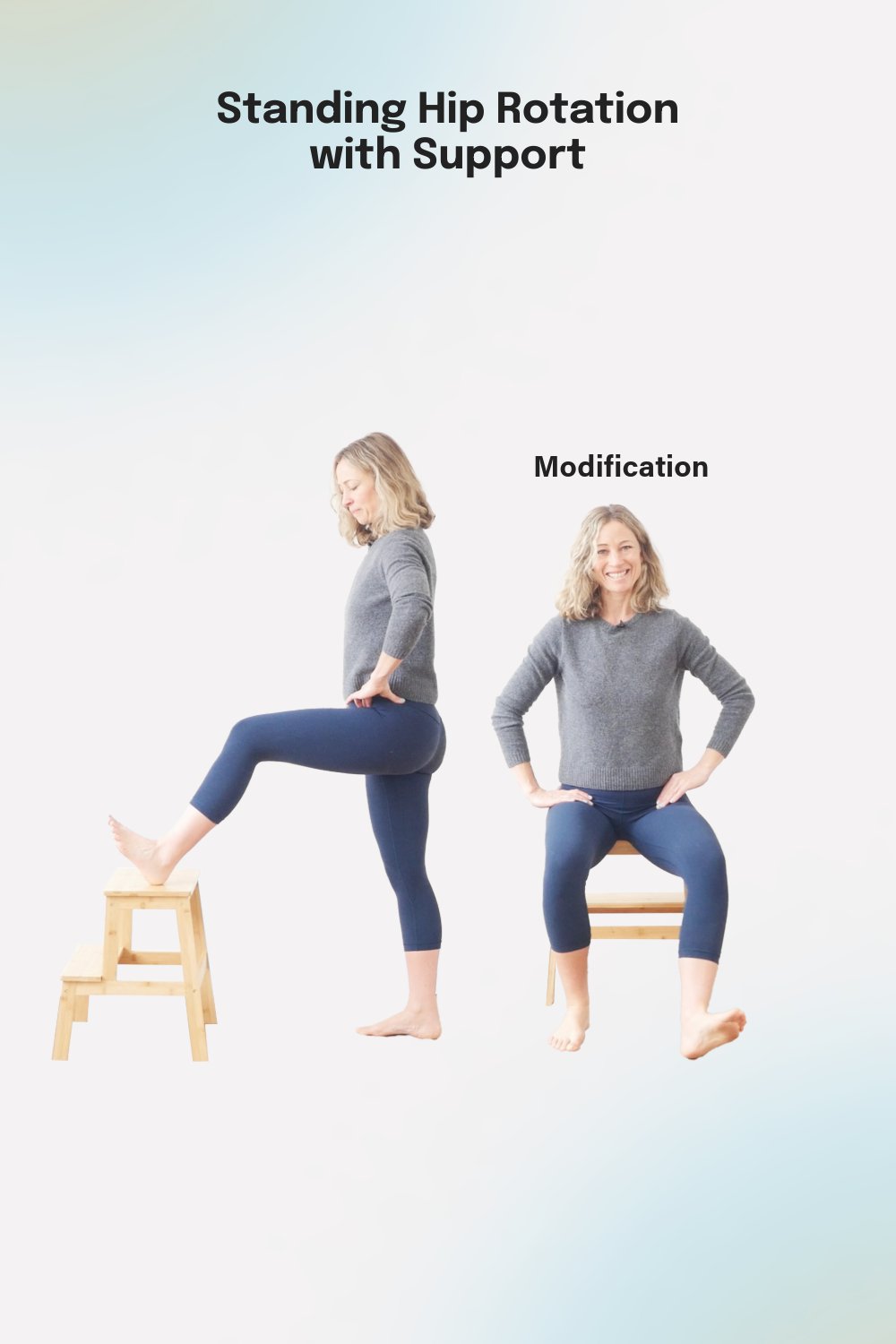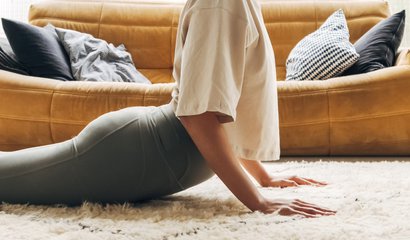April 4, 2025
Knee Pain Relief: Simple Movements to Support Your Knees
Knee pain is one of the most common musculoskeletal complaints, affecting people of all ages. Whether it’s from long hours sitting at a desk, improper movement patterns, or past injuries, finding the right knee pain relief strategies can make a huge difference in your daily comfort and mobility.
The good news is that you don’t need endless stretches to ease knee pain. Instead, small postural adjustments and targeted exercises can strengthen the muscles that support your knees, helping to relieve discomfort and prevent future pain.
In this guide, you’ll learn two simple but effective knee pain exercises designed to improve stability, reduce strain, and build strength where it matters most.
How Poor Posture Contributes to Knee Pain & How to Fix It
One of the most overlooked contributors to knee pain is posture. The way you stand, walk, and distribute your weight affects how much strain your knees endure. A common habit is shifting the pelvis forward, which pushes excess pressure onto the knee joints and forces them to absorb more impact than necessary.
A simple posture adjustment can help redistribute weight evenly, reducing knee discomfort and improving movement mechanics. By becoming aware of how you stand, you can create better alignment, ease strain on your knees, and build healthier movement habits over time.

Quick Posture Fix for Knee Pain Relief
- Stand naturally and notice where your weight sits.
- If your pelvis is shifted forward, try moving your hips back over your heels.
- Keep your feet grounded and balanced without overcorrecting.
- Maintain this alignment while standing in line, brushing your teeth, or washing dishes.
Over time, this small but powerful change can relieve strain on your knees and help you build better movement habits.
Best Knee Pain Exercises to Strengthen Your Legs
Stretching alone won’t solve knee pain—your glutes and hamstrings play a key role in keeping your knees strong and stable. One of the best ways to protect your knees is by activating the posterior chain, which includes the muscles in the back of your body that support knee alignment.

Exercise 1: Glutes of Greatness (Hip Hinge for Knee Support)
Strong, engaged glutes and posterior chain muscles take pressure off the knees. Many knee issues stem from underuse of these muscles, causing the knees to take on more load than they should. This movement helps activate the backside of the body, creating better support for the knees in everyday movement.
Stand with your feet hip-width apart and place your hands on a sturdy support like a yoga block or chair.
Bend your knees slightly and shift your hips back as if you’re closing a door with your butt.
Press your feet into the floor while maintaining a soft bend in the knees.
- Engage your glutes and feel your thigh bones reaching back as your upper body lengthens forward.
Slowly return to a standing position while keeping the engagement through your legs.
- Why it works: This movement teaches your body how to distribute weight properly, reducing stress on the knees while improving strength and stability.

Exercise 2: Lunge with Knee Activation
Lunges can be knee-friendly when done with proper activation. This movement reinforces strength and stability by engaging the muscles around the knee and preventing excess pressure on the joint. Learning to push into the floor and activate the legs creates a strong foundation for walking, climbing stairs, and daily movement.
- Step one foot forward into a lunge position with your back leg extended.
- Keep your front knee bent at a 90-degree angle, aligning it over your ankle.
- Instead of sinking down, press the front foot into the floor, activating your glutes and hamstrings.
- Hold this engagement for a few seconds, then slowly push back to standing.
- Repeat on the other side.
Why it works: This movement strengthens the muscles surrounding the knee, helping to improve control and reduce strain.

Exercise 3: Half Squat Activation
Squatting is a movement we use every day—sitting, standing, bending—but without proper activation, it can put unnecessary strain on the knees. This exercise focuses on engaging the glutes and hamstrings while reinforcing strong knee alignment, making squatting feel more stable and controlled.
- Stand with feet hip-width apart, weight evenly distributed.
- Shift your hips back as if you’re about to sit in a chair.
- Lower a few inches, keeping your knees aligned with your toes.
- Press your feet into the floor and slowly rise back up, maintaining control.
- Repeat, focusing on engaging your glutes and hamstrings rather than relying on the knees.
Why it works: This movement helps train the knees to handle load properly, reducing pain during everyday activities.
Exercise 4: Tibial Rotation (Shin Rotation)
The knee isn’t just a hinge—it also has a small amount of rotation at the shin (tibia). When this movement is restricted, it can create tension and discomfort. This exercise helps restore natural knee mechanics, improving mobility and reducing strain.
- Sit with one leg extended and the foot flexed.
- Imagine your foot is in a ski boot to prevent ankle movement.
- Hold your upper thigh steady with your hands.
- Rotate your shin inward, then outward, while keeping your foot still.
- Repeat 10–15 times, focusing on controlled movement.
Why it works: This small but effective movement improves knee mobility and helps reset alignment, easing discomfort caused by poor movement patterns.



Exercise 5: Standing Hip Rotation with Support
Hip mobility plays a crucial role in knee health. When the hips move well, the knees don’t have to compensate. This exercise improves hip rotation control, helping to reduce strain on the knees and improve overall movement mechanics.
- Stand with one foot supported on a block or low stool.
- Shift your hips back to maintain good posture.
- Rotate your thigh inward, then outward, while keeping your pelvis stable.
- Repeat several times, then switch sides.
Why it works: This movement strengthens the muscles surrounding the hips and pelvis, providing better support for the knees.
Download the Free Knee Pain Relief Guide
Want a simple, step-by-step guide to knee pain relief? Download our Free Knee Pain Relief Guide for easy-to-follow exercises and expert tips you can use right away.
How to Relieve Knee Pain in Daily Activities
Once you understand these key knee pain exercises, it’s time to apply them to daily life. The way you move throughout the day has a significant impact on your knees, and small adjustments can help reduce strain, improve alignment, and prevent discomfort from returning.
Try incorporating these movement strategies into your routine:
- Walking or climbing stairs – Keep your hips back and engage your glutes as you step to avoid excessive pressure on the knees.
- Getting up from a chair – Shift your weight into your heels and press through your feet to activate your glutes instead of relying on your knees.
- Squatting or bending down – Maintain a soft bend in your knees and focus on hinging from your hips to distribute weight more effectively.
- Standing for long periods – Avoid locking your knees by keeping a slight bend and shifting your pelvis back to balance weight properly.
By making these small yet powerful adjustments, you can ease knee pain, improve stability, and support long-term joint health in your everyday movements.
Frequently Asked Questions
A Note on Knee Pain
The information in this guide is for general movement education and is not a substitute for medical advice. If you have persistent, worsening, or severe knee pain, consult a doctor or physical therapist to determine the best approach for your specific needs.
What is the fastest way to relieve knee pain?
The fastest way to relieve knee pain depends on the cause of your discomfort. Adjusting your posture, engaging the muscles that support knee stability, and practicing movements like tibial rotations and hip hinges may help ease strain.
How often should I do these knee pain exercises?
Daily practice is ideal, but even a few times a week can be beneficial. The key is consistency—activating your glutes and stabilizing your knees regularly can help improve movement patterns over time.
Should I stretch or strengthen for knee pain relief?
While stretching can be helpful for some people, building strength in the glutes, hamstrings, and hip stabilizers is often more effective in reducing knee strain. Strengthening exercises can provide better long-term support and stability.
What if my knee pain gets worse?
These exercises should feel supportive, not painful. If discomfort increases, stop and reassess your movements. Persistent or worsening pain may indicate an underlying issue that requires further assessment by a healthcare professional.



